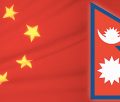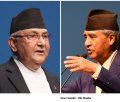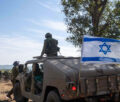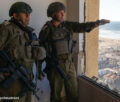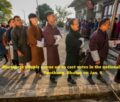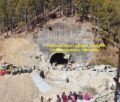Pakistan: The South Waziristan Migration

By Scott Stewart, Stratfor *
Pakistan has been a busy place over the past few weeks. The Pakistani armed forces have been conducting raids and airstrikes against the Tehrik-i-Taliban Pakistan (TTP) and other foreign Islamist fighters in Bajaur Agency, a district inside Pakistan’s Federally Administered Tribal Areas (FATA), while wrapping up their preparations for a major military offensive into South Waziristan. The United States has conducted several successful missile attacks targeting militants hiding in areas along the Afghan-Pakistani border using unmanned aerial vehicles.
Threatened by these developments — especially the actions of the Pakistani military — the TTP and its allies have struck back. They have used larger, vehicle-borne improvised explosive devices (VBIEDs) in attacks close to their bases in the Pakistani badlands to conduct mass-casualty attacks against soft targets in Peshawar and the Swat Valley. They have also used small arms and small suicide devices farther from their bases to attack targets in the twin cities of Rawalpindi and Islamabad, the respective seats of Pakistan’s military and civilian power.
Initially, we considered devoting this week’s Security and Intelligence Report to discussing the tactical details of the Oct. 10 attack against the Pakistani army headquarters. But after taking a closer look at that attack, and the bigger mosaic it occurred within, we decided to focus instead on something that has not received much attention in the media — namely, how the coming Pakistani offensive in South Waziristan is going to have a heavy impact on the militants currently living and training there. In fact, we can expect the Pakistani offensive to cause a large displacement of militants. Of course, many of the militants who are forced to flee from South Waziristan, the epicenter of Pakistan’s insurgency, will likely land in areas not too far away — like Balochistan — but at least some of the militants who will be flushed out of South Waziristan will land in places far from Pakistan’s FATA and North-West Frontier Province.
The Coming Offensive
The Pakistani military has been preparing for the coming offensive into South Waziristan for months. They have positioned two divisions with some 28,000 troops for the attack, and this force will be augmented by paramilitary forces and local tribal militias loyal to Islamabad. As seen by the Pakistani offensives in Swat and Bajaur earlier this year, the TTP and its foreign allies are no match for the Pakistani military when it turns its full resources to address the problem.
The Pakistanis previously attempted a halfhearted offensive in South Waziristan in March of 2004 that only lasted 12 days before they fell back and reached a “negotiated peace settlement” with the militant leaders in the area. A negotiated peace settlement is a diplomatic way of saying that the Pakistanis attempted to pay off Pakistani Taliban leaders like Nek Mohammed to hand over the foreign militants in South Waziristan and stop behaving badly. The large cash settlements given to the militants did little to ensure peace and instead allowed the Taliban leaders to buy more weapons, pay their troops and essentially solidify their control in their areas of operation. The Taliban resumed their militant activities shortly after receiving their payments (though the most prominent leader, Nek Mohammed, was killed in a U.S. missile strike in June 2004).
This time, the South Waziristan offensive will be far different than it was in 2004. Not only do the Pakistanis have more than four times as many army troops committed to it, but the Pakistani military has learned that if it uses its huge airpower advantage and massed artillery, it can quickly rout any serious TTP resistance. In Bajaur, the Pakistanis used airstrikes and artillery to literally level positions (and even some towns) where the Taliban had tried to dig in and make a stand. Additionally, in January 2008, the Pakistani army conducted a successful offensive in South Waziristan called “Operation Zal Zala” (Earthquake) that made excellent progress and resulted in the loss of only eight soldiers in four days of intense fighting. This offensive was stopped only because Baitullah Mehsud and his confederates sued for peace — a truce that they quickly violated.
The lessons of past military operations and broken truces in South Waziristan, when combined with the recent TTP strikes against targets like the army headquarters, have served to steel the will of the government (and particularly the military). Pakistani government sources tell STRATFOR that they have the intent and the ability to “close the case for good.” This means that there should be no negotiated settlement with the TTP this time.
Of course, we are not the only people who can anticipate this happening. The TTP and others like the al Qaeda core leadership know all too well what happened in Bajaur and Swat. They have also been watching the Pakistani military prepare for the South Waziristan offensive for months now. The TTP leadership realizes that if they attempt to stand and fight the Pakistani military toe-to-toe they will be cut to shreds. Because of this, we believe that the TTP will adopt a strategy similar to that used by the Taliban in the face of overwhelming U.S. airpower following the U.S. invasion of Afghanistan, or that of the Iraqi military following the U.S. invasion of Iraq. Rather than fight in set-piece conventional battles to the bitter end and be destroyed, after some initial resistance the TTP’s fighters will seek to melt away into the population and then conduct insurgent and terrorist strikes against the Pakistani military, both in the tribal regions and in Pakistan’s core regions. This is also the approach the TTP leadership took to the Pakistani offensive in Swat and Bajaur. They made noises about standing and fighting in places like Mingora. In the end, however, they melted away in the face of the military’s offensive and most of the militants escaped.
Contrary to popular perception, the area along the Afghan-Pakistani border is fairly heavily populated. The terrain is extremely rugged, but there are millions of Pakistanis living in the FATA, and many of them are extremely conservative and hostile toward the Pakistani government. This hostile human terrain poses perhaps a more significant obstacle to the Pakistani military’s operations to root out jihadists than the physical terrain.
Accurate and current population numbers are hard to obtain, but the government of Pakistan estimated the population of South Waziristan to be nearly 500,000 in 1998, although it is believed to be much larger than that today. There are also an estimated 1.7 million Afghan refugees living on the Pakistani side of the border. This human terrain should enable many of the TTP’s Pashtun fighters to melt into the landscape and live to fight another day. Indeed, the militants are already heavily embedded in the population of South Waziristan, and the TTP and its rivals have controlled much of the area for several years now.
We have seen reports that up to 200,000 people have already fled areas of South Waziristan in anticipation of the coming military operation, and it is highly likely that some TTP fighters and foreign militants have used this flow of displaced people as camouflage to leave the region just as they did in Swat and Bajaur. Whether the coming offensive is as successful in destroying the TTP as our sources assure us it will be, the military action will undoubtedly force even more militants to leave South Waziristan.
The Camps
In the wake of the U.S. invasion of Afghanistan, the many militant training camps run by al Qaeda and other organizations in Afghanistan were destroyed. Many of the foreign jihadists who were at these camps fled to Pakistan with the Taliban, though others fled to Iran, Iraq or elsewhere. This migration shifted the focus of jihadist training efforts to Pakistan, and South Waziristan in particular. Quite simply, there are thousands of foreign jihadists who have traveled to Pakistan to receive paramilitary training at these camps to fight in Afghanistan. A smaller number of the trainees have received advanced training in terrorist tradecraft, such as bombmaking, in the camps.
Due to the presence of these transplanted training installations, South Waziristan is “jihadist central,” with jihadists of all stripes based in the area. This confluence will complicate Islamabad’s attempts to distinguish between “good” and “bad” Taliban elements. Both the good Taliban aligned with Islamabad that carry out their operations in Afghanistan and the bad Taliban fighting against Islamabad are based in South Waziristan, and telling the difference between the two factions on the battlefield will be difficult — though undoubtedly elements of Pakistani intelligence will attempt to help their Taliban friends (like the Haqqani network and Mullah Omar’s network) avoid being caught up in the coming confrontation.
There are literally thousands of Arab, Uzbek, Uighur, Chechen, African and European militants currently located in the Pakistani badlands, and a good number of them are in South Waziristan. Many of these foreigners are either teaching at or enrolled in the jihadist training camps. These foreigners are going to find it far harder to hide from the Pakistani military by seeking refuge in Afghan refugee camps or small tribal villages than their Pashtun brethren.
Some of these foreigners will attempt to find shelter in North Waziristan, or perhaps in more heavily — and more heterogeneously — populated areas like Quetta (Mullah Omar’s refuge) or Peshawar. Others may try to duck into the Taliban-controlled areas of Afghanistan, but there is a good chance that many of these foreign militants will be forced to leave the Pakistan-Afghanistan area to return home or seek refuge elsewhere.
This exodus will have mixed results. On one hand it will serve to weaken the international jihadist movement by retarding its ability to train new jihadists until replacement camps can be established elsewhere, perhaps by expanding existing facilities in Yemen or Africa. On the other hand, it will force hundreds of people trained in terrorist tradecraft to find a new place to live — and operate. In some ways, this migration could mirror what happened after the number of foreign jihadist began to be dramatically reduced in Iraq — except then, many of the foreigners could be redirected to Pakistan for training and Afghanistan to fight. There is no comparable second theater now to attract these foreign fighters. This means that many of them may end up returning home to join insurgent movements in smaller theaters, such as Chechnya, Somalia, Algeria and Central Asia.
Those with the ability and means could travel to other countries where they can use their training to organize militant cells for terrorist attacks in much the same way the foreign fighters who fought in Afghanistan in the 1980s and left after the fall of the Soviet-backed government there went on to fight in places like Bosnia and Chechnya and formed the nucleus of al Qaeda and the current international jihadist movement.
The Next Generation
There is a big qualitative difference between the current crop of international fighters in South Waziristan and those who fought with the mujahideen in Afghanistan in the 1980s. During the earlier conflict, the foreigners were tolerated, but in general they were not seen by their Afghan counterparts as being particularly valiant or effective (though the Afghans did appreciate the cash and logistical help they provided). In many engagements the foreigners were kept out of harm’s way and saw very little intense combat, while in some cases the foreign fighters were essentially used as cannon fodder.
The perception of the foreigners began to change during the 1990s, and units of foreigners acquitted themselves well as they fought alongside Taliban units against the Northern Alliance. Also, following the U.S. invasions of Iraq and Afghanistan, the foreign jihadists have proved themselves to be very effective at conducting terrorist attacks and operating in hostile territory.
In fact, over the past several years, we have witnessed a marked change in the ways the Afghan Taliban fight. They have abandoned some of their traditional armed assault tactics and have begun to employ al Qaeda-influenced roadside IED attacks and suicide bombings — attacks the Afghan fighters had previously considered “unmanly.” It is no mere coincidence that the number of suicide attacks and roadside IED attacks in Afghanistan increased dramatically after al Qaeda began to withdraw its forces from Iraq. There is also a direct correlation between the IED technology developed and used in Iraq and that now being employed by the Taliban in Afghanistan.
All this experience in designing and manufacturing IEDs in Iraq, Afghanistan and Pakistan means that the jihadist bombmakers of today are more highly skilled than ever, and they have been sharing their experience with foreign students at training camps in places like South Waziristan. Furthermore, the U.S. presence in Iraq and Afghanistan has provided a great laboratory in which jihadists can perfect their terrorist tradecraft. A form of “tactical Darwinism” has occurred in Iraq and Afghanistan as coalition firepower has weeded out most of the inept jihadist operatives. Only the strong and cunning have survived, leaving a core of hardened, competent militants. These survivors have created new tactics and have learned to manufacture new types of highly effective IEDs — technology that has already shown up in places like Algeria and Somalia. They have been permitted to impart the knowledge they have gained to another generation of young aspiring militants through training camps in places like South Waziristan.
As these foreign militants scatter to the four winds, they will be taking their skills with them. Judging from past waves of jihadist fighters, they will probably be found participating in future plots in many different parts of the world. And also judging from past cases, they will likely not participate in these plots alone.
As we have discussed in the past, the obvious weakness of the many grassroots jihadist cells that have been uncovered is their lack of terrorist tradecraft. They have the intent to do harm but not the ability, and many times the grassroots cells end up finding a government informant as they seek help acquiring weapons or constructing IEDs. When these inept “Kramer terrorists” manage to get linked up with a trained terrorist operative, they can cause considerable damage.
The possibility of these militants conducting attacks or bringing much-needed capability to grassroots cells means that the South Waziristan migration, which has almost certainly already begun, will give counter terrorism officials from Boston to Beijing something to worry about for the foreseeable future.
( *The study by Stratfor first appeared on its website, www.startfor.com)
-
Book Shelf
-
 Book Review
DESTINY OF A DYSFUNCTIONAL NUCLEAR STATE
Book Review
DESTINY OF A DYSFUNCTIONAL NUCLEAR STATE
- Book ReviewChina FO Presser Where is the fountainhead of jihad?
- Book ReviewNews Pak Syndrome bedevils Indo-Bangla ties
- Book Review Understanding Vedic Equality….: Book Review
- Book Review Buddhism Made Easy: Book Review
- Book ReviewNews Elegant Summary Of Krishnamurti’s teachings
- Book Review Review: Perspectives: The Timeless Way of Wisdom
- Book ReviewNews Rituals too a world of Rhythm
- Book Review Marx After Marxism
- Book Review John Updike’s Terrorist – a review
-
-
Recent Top Post
-
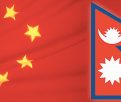 Commentaries
Impasse over BRI Projects in Nepal
Commentaries
Impasse over BRI Projects in Nepal
-
 CommentariesNews
Yet another Musical Chairs in Kathmandu
CommentariesNews
Yet another Musical Chairs in Kathmandu
-
 CommentariesTop Story
Spurt in Anti-India Activities in Canada
CommentariesTop Story
Spurt in Anti-India Activities in Canada
-
 NewsTop Story
Nepal: Political Stability Under Threat Again
NewsTop Story
Nepal: Political Stability Under Threat Again
-
 NewsTop Story
Accountability Tryst With 2024 Ballot….
NewsTop Story
Accountability Tryst With 2024 Ballot….
-
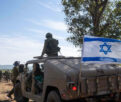 NewsTop Story
What Would “Total Victory” Mean in Gaza?
NewsTop Story
What Would “Total Victory” Mean in Gaza?
-
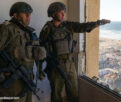 CommentariesTop Story
The Occupation of Territory in War
CommentariesTop Story
The Occupation of Territory in War
-
 CommentariesTop Story
Pakistan: Infighting in ruling elite intensifies following shock election result
CommentariesTop Story
Pakistan: Infighting in ruling elite intensifies following shock election result
-
 CommentariesTop Story
Proforma Polls in Pakistan Today
CommentariesTop Story
Proforma Polls in Pakistan Today
-
 CommentariesTop Story
Global South Dithering Away from BRI
CommentariesTop Story
Global South Dithering Away from BRI
-
AdSense code


